Green List: The shape of things to come in Saudi Arabia
Saudi Arabia’s proposed carbon-neutral futuristic megacity has the potential to revitalise the Gulf nation’s reputation and revenue streams. But will it actually ever happen?
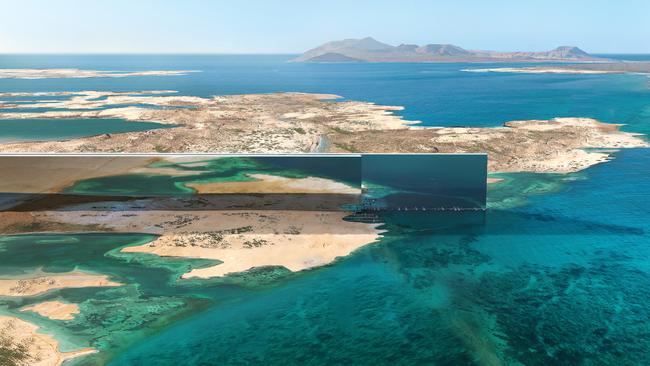
On Saudi Arabia’s Red Sea coast, two dozen bulldozers have begun dredging a line in the sand. The Gulf kingdom – long known for its desire to move beyond its vast reserves of crude oil – has decided to stop talking and start building.
Under the leadership of Crown Prince Mohammad bin Salman, known to many as MBS, an experimental new city is moving from concept to construction.
THE LINE, pitched as a “civilisational revolution that puts humans first”, will be just 200 metres wide but stretch 170 kilometres along the coast and sit 500 metres above sea level. The hope is for some nine million people to eventually call it home, spread across a footprint of just 34 square kilometres.
MBS told advisers he wants the scheme to be Saudi’s equivalent of Egypt’s pyramids.
While located in the midst of a largely uninhabited desert, the zero-carbon city will have neither roads, cars nor pollution. High-speed rail will allow residents to reach either end of the metropolis in 20 minutes, with people able to move in “three dimensions”: up, down or across, in what is dubbed Zero Gravity Urbanism by its promoters, NEOM. Parks, schools and workplaces will all be within a five-minute journey.
An outer mirrored glass facade will shield residents from the harsh 50°C-plus heat with an “ideal” all-year round climate in its place.
Remarkably, while THE LINE sounds like some far-off dystopian vision, the project is just one part of the Middle East nation’s Vision 2030 goal, which aims to diversify its economy.
THE LINE would be one of 10 regions in the broader NEOM development, which includes the Oxagon port and logistics hub, and the Trojena development, a “year-round mountain destination” offering outdoor skiing, a freshwater lake and a nature reserve, and the host of the 2029 Asian Winter Games.
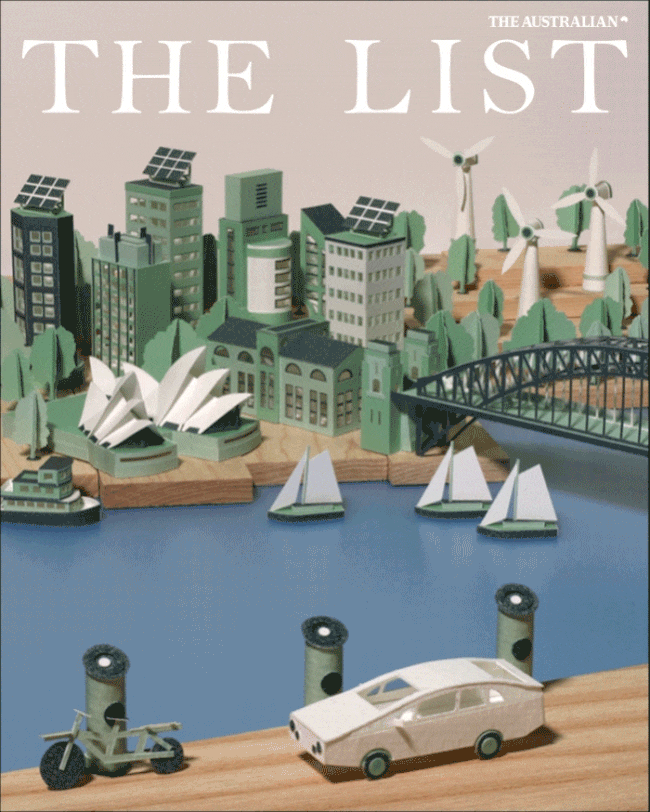
Sindalah, a luxury island destination in the Red Sea, aims to become a new yachting gateway, despite being some 17 hours by boat from the Mediterranean.
Saudi has driven down this road before. Prince Mohammed’s uncle, Abdullah bin Abdulaziz, dreamt up KAEC two decades ago. The megaproject, located an hour north of Jeddah, was sold as a major economic hub and city to millions of people.
The reality is less convincing, with a model of the city twisted and tweaked, bringing invariable delays. Unsurprisingly, THE LINE has been held up as a rival to KAEC and part of Saudi’s attempt to modernise one of the most restrictive societies in the world.
The overall budget of $US500 billion ($703 billion) needed to pull off the NEOM hubs gives an idea of the hefty capital commitment required to deliver Saudi’s vision. With a first phase expected to cost $US320 billion, some $US80 billion has been set aside for an investment fund tied to NEOM, with a planned sharemarket float of the project slated for 2024.
Half the costs will be met by Saudi Arabia’s Public Investment Fund, the country’s sovereign wealth fund, with the rest to be covered by the IPO, private money and funds from the oil and gas-rich Persian Gulf region.
Australian links to the ambitious new development have also emerged.
Former Dow boss Andrew Liveris, who is on the board of Saudi Aramco – the world’s biggest oil company – and is also the president of the 2032 Brisbane Olympic Games organising committee, serves on the NEOM advisory board along with former NSW deputy premier and National leader Andrew Stoner.
Australian engineering giant Worley has also scooped up work building a crucial seawater desalination facility for the bold project.
The renewable vision for THE LINE aims to tap into vast resources of both sun and wind, helping to make 650 tonnes of green hydrogen per day.
Still, the delivery of its energy vision appears far from settled. When asked about a timeline for delivery of its energy goals, NEOM’s response is opaque.
“At NEOM, we’re building a place comparable to Belgium. When is Belgium ever done? Never, right? Even though our projects have timelines, we believe innovation and development will be a constant and therefore delivery will be a constant as well.”
Power grid infrastructure will funnel solar and wind directly into THE LINE, with green hydrogen scheduled to start operating from 2025.
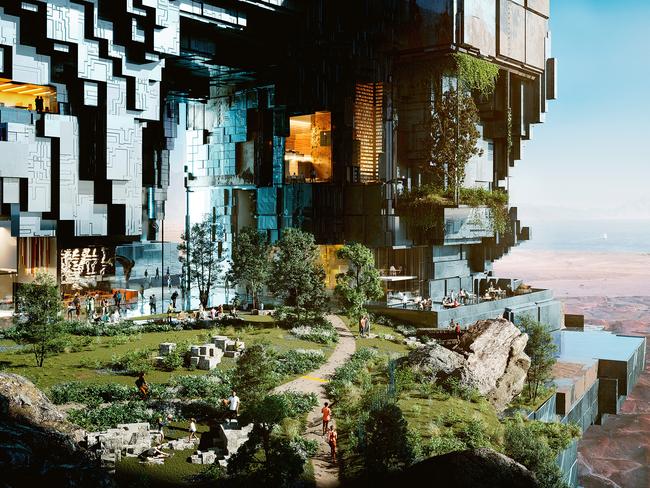
As the digging progresses, several major questions remain: who will live there? And will the city be subject to Saudi’s repressive regime where womens’ rights remain limited at best?
Saudi Arabia’s attempts to re-build its image following the murder of journalist Jamal Khashoggi by government agents in 2018 include a vast modernisation of both its economy and culture, but it remains unclear whether the required sums of foreign investment will support the MBS plan.
Promotional material promises the zone “will be independent of the kingdom’s existing governmental framework, excluding sovereign laws. Social norms in NEOM will adopt leading practices to improve standards of liveability for its residents and visitors”. In essence, Saudi can create an entirely new set of rules and regulations to entice people to THE LINE without having to change the rest of the nation at the same speed.
Sustainability is at the heart of Saudi’s future push, but the actual logistics of delivering a green city closed off in a capsule face huge hurdles.
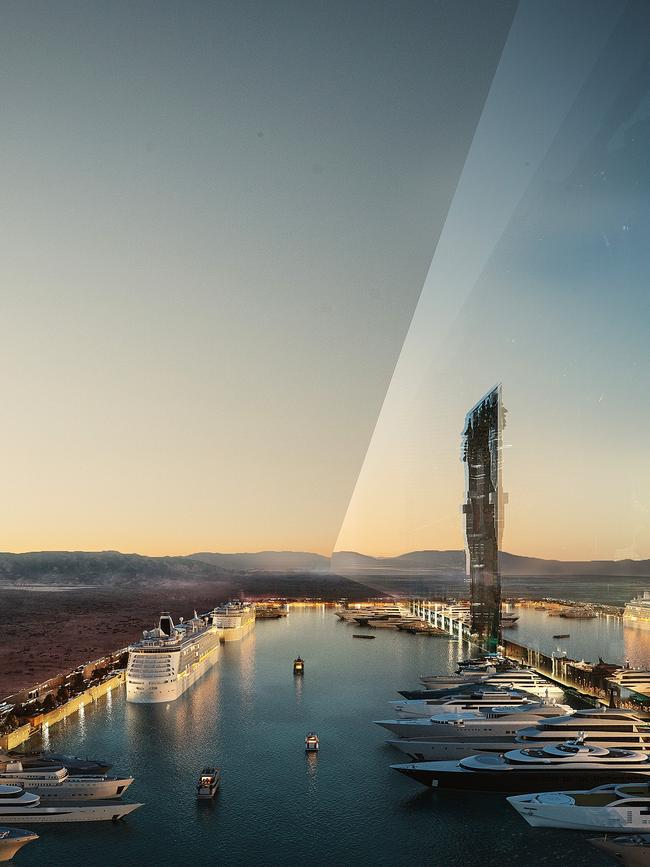
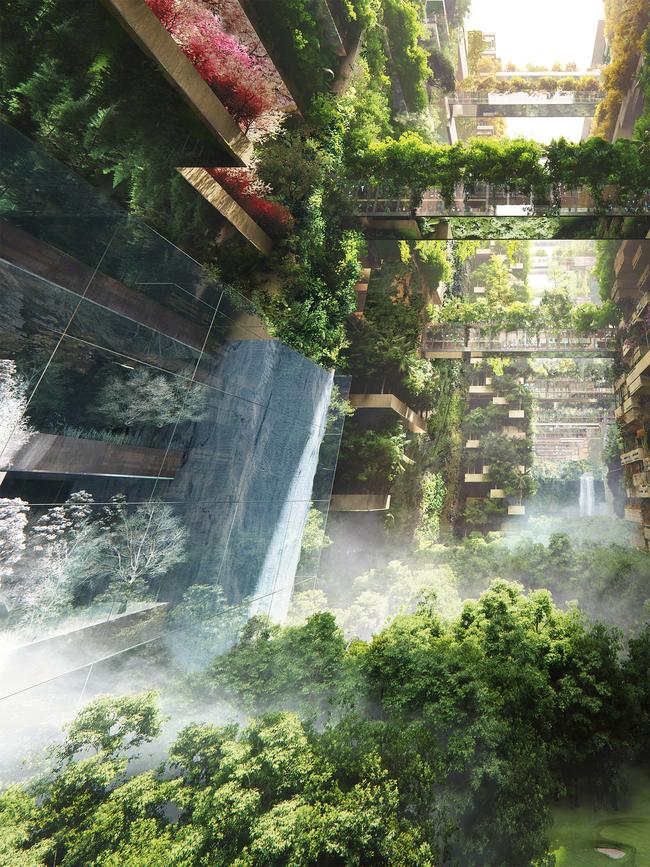
Documents cited by The Wall Street Journal say that to feed residents, vegetables will be “autonomously harvested and bundled” and moved into “community canteens” and “co-living kitchens”. A fee will then have to be paid to receive breakfast, lunch and dinner.
The mechanics of infrastructure and amenities will be tucked away underground, with an army of workers likely to be largely hidden from view of residents.
Indigenous people living on the site in Tabuk have also been resistant, with a gun battle reportedly breaking out over their plight. Meanwhile, the changing scope of works from MBS has created a steady source of revenue for hundreds of well-paid advisers, while also acting to slow down the speed of the project.
A $US200 billion solar deal with Japan’s Softbank announced in March 2018 was to help wean Saudi off oil and create the biggest renewable development in the world, generating 200 gigawatts by 2030. But just six months later, it was scrapped. “Everyone is just hoping this whole idea would just die,” a Saudi energy official told The Wall Street Journal at the time.
Still, with Saudi making an estimated $US1 billion from oil exports every single day, the sheer profitability of black gold suggests THE LINE will – eventually – be built. Some 20 per cent of infrastructure works are already complete, according to a January 2023 update.
But as for an end date, no one seems quite sure. Nor who the nine million people living on site may be.
“What we will present when we are ready will be revolutionary,” NEOM’s chief executive Nadhmi
Al-Nasr says. “We are redefining the future now. NEOM is open for business.”
More Coverage
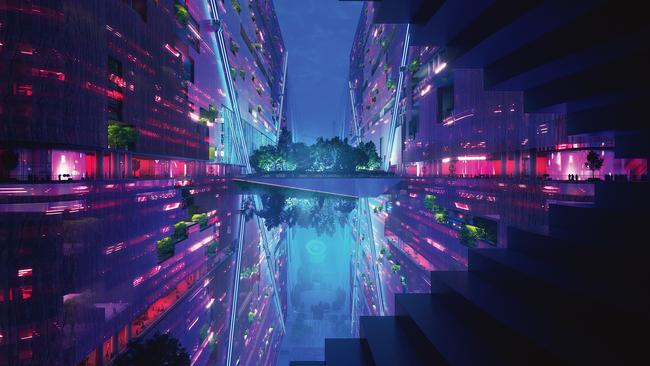




To join the conversation, please log in. Don't have an account? Register
Join the conversation, you are commenting as Logout